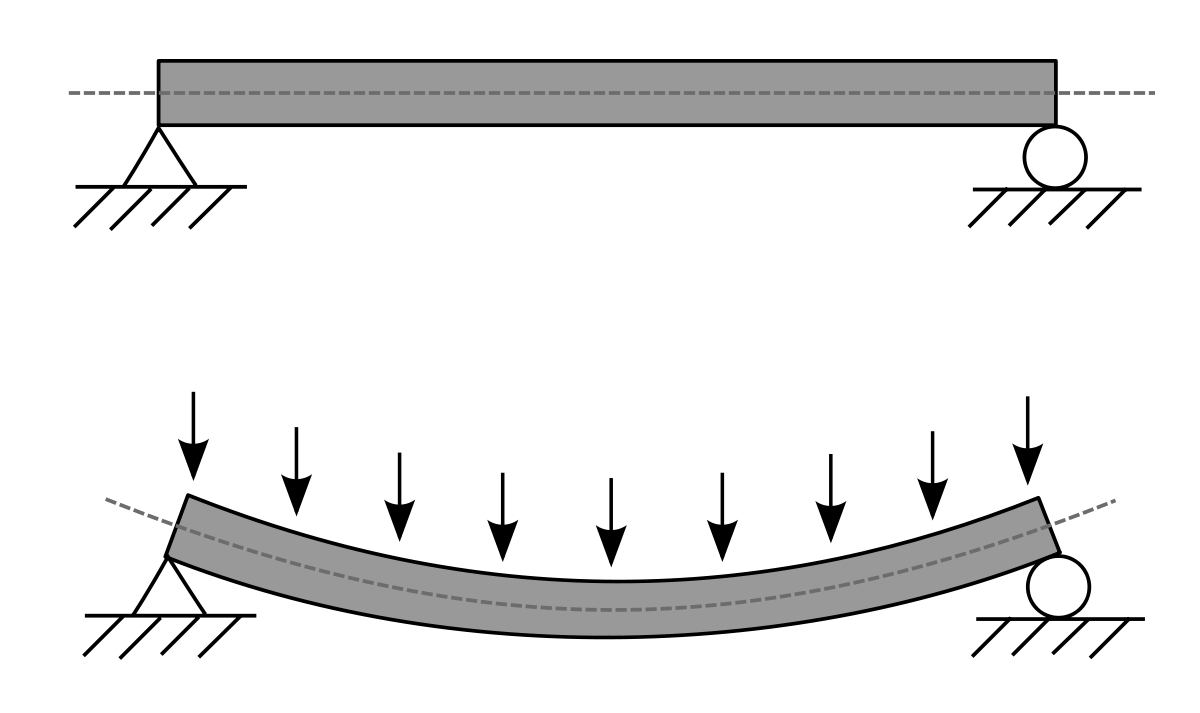ME202 - Strength of Materials

Instructor
Prof. Krishna S. Jonnalagadda
Section
S2, Based on choice with an upper cap of 85- 90 students
Semester
Spring
Course Difficulty
Moderate (Mainly focussing on the applications of theory learnt in ME 201 and building up on it)
Time Commitment Required
Initially it is easy to cope with the course, provided you are clear with the basics of ME 201. Students who have not done ME 201 under him, might require a little extra effort to get used to the pattern. Homeworks are doable, but gradually the tutorials start getting lengthy and involved and require some effort (around an hour) before the tutorials. This course focuses mainly on applications and problem solving and with continuous evaluation, on an average it requires around 2 hrs per week apart from the class hours.
Grading
Moderate grading - Highest score gets an AP, and then relative grading - mostly 90%, 80% and so on of the highest are set as cut offs
Attendance Policy
Attendance is taken, but not used for DX. It is used at professor’s discretion to pass students in borderline cases. Pre- decided tutorials are graded though and attendance during the tutorial counts.
Pre-requisites
ME 201
Evaluation Scheme and Weightages
Evaluation was based on homeworks (which accounted for 10%), tutorials (around 10 tuts accounting for 10%), regular quizzes accounting for 40% (Best 5 scores out of 6 considered), and the end semester examination accounting for 40%. Consistent performance throughout the semester thus helps with a good grade. Tentative quiz dates are provided at the starting of the semester. And no mid sem exam is conducted.
Topics Covered in the Course
Shear Stresses in Beams, Torsion of circular rods, Axisymmetric problems, Deflections in beams, Unsymmetrical bending of straight beams, Shear stresses in thin walled beams, Torsion in thin walled beams, Stresses and deflections in initially curved bars, Energy Methods (including PVW, Castigliano’s theorems), Elastic instability and buckling of beams, Rotating disc and rod problems (body force concept)
Quality of Lectures
The instructor explains concepts well and encourages in and after the class discussion on the topics covered. He clears doubts in general coming mainly from the regular students, and even creates a continuous feedback and doubt clearing option on moodle for students to use throughout the semester. He insists on taking notes. He teaches mostly on the board and doesn’t use slides. Theory in general is not much, so more attention is given to problem solving during classes and tutorials. (though it might become too calculative at times). Problem solving consumes more time, and the instructor often takes extra lectures or tutorials to cover up.
Assignments and projects in the Course
Homeworks are usually do- able, except for a few questions which require good thought. However, they might seem to be lengthy due to being highly calculative. Thankfully, no project :)
Exams
Quizzes are conducted in various patterns depending upon student feedback and instructor’s choice. Few of the quizzes are individual, and require good speed as well as a good practice of tutorial questions. Marking is usually done leniently in this course. Some quizzes are group quizzes, where groups are made on the basis of either CPI or the marks scored in the course to maintain fairness in group creation. During the group quizzes, discussion time is given at the start of the quiz and then separate time is given for solving it. Discussions prove to be fruitful if all the 3 group members involved in it, share their approach and a quicker approach can be figured out. The questions generally vary from easy to tough depending on the content of that quiz. End semester exams are a bit involved and require proper understanding of the concepts to apply them well during problem solving. You can in general expect a moderate to tough paper with few questions requiring proper thought.
Reference Material
- S.H. Crandell, M.C. Dahl and S.J. Lardner. An Introduction to the Mechanics of Solids, McGraw Hill Education (India) Private Limited, Third Edition, 2012.
- F.P. Beer and E.R. Johnston, Jr., J.T. Dewolf, D.F. Mazurek. Mechanics of Materials, Sixth edition, Mcgraw Hill Education (India) Private Limited, 2013.
- J.P. Den Hartog. Strength of Materials, Dover Publications, First edition, 1974.
- E.P.Popov, T.A. Balan. Engineering Mechanics of Solids, PHI Learning Private Limited, New Delhi, 2012.
- A. P. Boresi and R. J. Schmidt, Advanced Mechanics of Materials, John Wiley and Sons, Sixth edition, 2003. Class notes are sufficient for reference, problem solving may be done from any of these books.
Importance of Course
This course is a base for advanced topics, courses and labs in Solid Mechanics and hence is essential for research in related fields too. Since the course also focuses on applications of the basic concepts, it’s an ideal course to gain insight into the field.